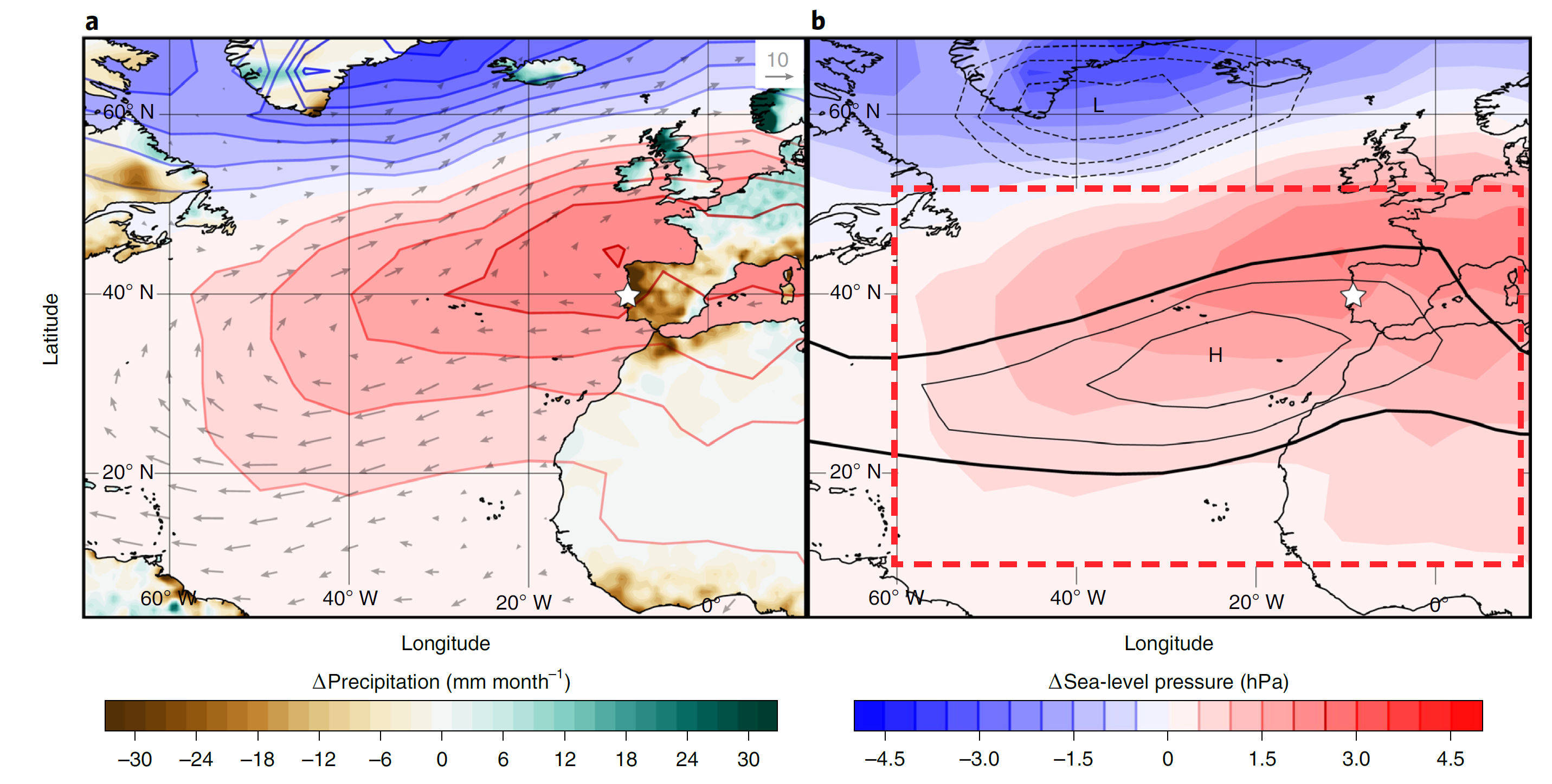Deep Learning Climate Model Development
General circulation models (GCMs) are a fundamental tool of modern climate science. They create virtual representations of Earth's atmosphere and oceans that scientists use to simulate future climate as well as perform experiments to explore the underlying system. State of the art coupled GCMs, however, are computationally expensive and can only be run on the world's largest supercomputers. In my research, I develop deep learning-based climate models that produce high-fidelity simulations of the Earth system. Running on modest hardware, our deep learning models are 180x faster than coupled GCMs running at high performance supercomputing facilities.
While deep learning climate models are still relatively new, their demonstrated economy and their ability to realistically simulate climate at reduced complexity make them an important tool in the future of climate science.
The figure to the right shows climatologies of atmospheric blocking and the annular modes within our recently developed Deep Learning Earth System Model (DLESyM).
Here's our manuscript describing a deep learning model of the Earth system:
Data-Driven Weather Prediction
Modern weather forecasts are probabilistic and require meteorologists to run ensemble simulations that contain many equally likely trajectories. Larger ensembles can produce more informative forecasts, which are especially useful for estimating the probability of extreme weather events. Additionally, these ensembles are vital for forecasting at seasonal to subseasonal lead times (2-6 weeks). The economy of deep learning models makes possible ensemble forecasting at unprecedented scales, heralding a dramatic change in the way we forecast.
My research explores the use of deep learning in weather prediction, including the development of novel model architectures, the effective construction of ensembles, and the establishment of evaluation methods for deep learning models.
The figure to the right highlights the realism of extreme weather within one of our deep learning models. Plotted are winds and surface pressure from observations (first row) and our simulations (bottom two rows) during strong winter storms
Studies related to deep learning weather prediction:
- A Deep Learning Earth System Model for Efficient Simulation of the Observed Climate (2024)
- Advancing Parsimonious Deep Learning Weather Prediction Using the HEALPix Mesh (2024)
- Sub-Seasonal Forecasting With a Large Ensemble of Deep-Learning Weather Prediction Models (2021)

Climate Change in the North Atlantic
The North Atlantic experiences large seasonal variability as well as sensitivity to interannual climate oscillations such as the North Atlantic Oscillation. This strong internal variability arises from fascinating regional dynamics. This variability also makes the identification of climate change signals difficult.
My research uses climate models and observations in the identification and attribution of climate change signals in the region. To contextualize modern variability and trends, ancient proxy records and paleoclimate simulations are used. By carefully analyzing different aspects of North Atlantic climate variability, we can better understand the underlying dynamics and their response to climate change.
The image to the right shows recent differences in terrestrial precipitation and sea level pressure in the North Atlantic. Our work explored the visible northward expansion of the Azores High and the concurrent Iberian Peninsula drying.
Here are some projects I was involved in studying North Atlantic climate:
- Twentieth-century Azores High expansion unprecedented in the past 1,200 years (2022)
- Iberian hydroclimate variability and the Azores High during the last 1200 years (2023)
- Rapid 20th century warming reverses 900-year cooling in the Gulf of Maine (2022)
Press
- Carbon Brief report on Azores High expansion
- Guardian article on Iberian drying citing our work
- WHOI press release on Gulf of Maine warming
- WHOI press release on Azores High expansion
- ISU press release on clam based proxy reconstructions
- DownToEarth article on european droughts and heatwaves citing our work